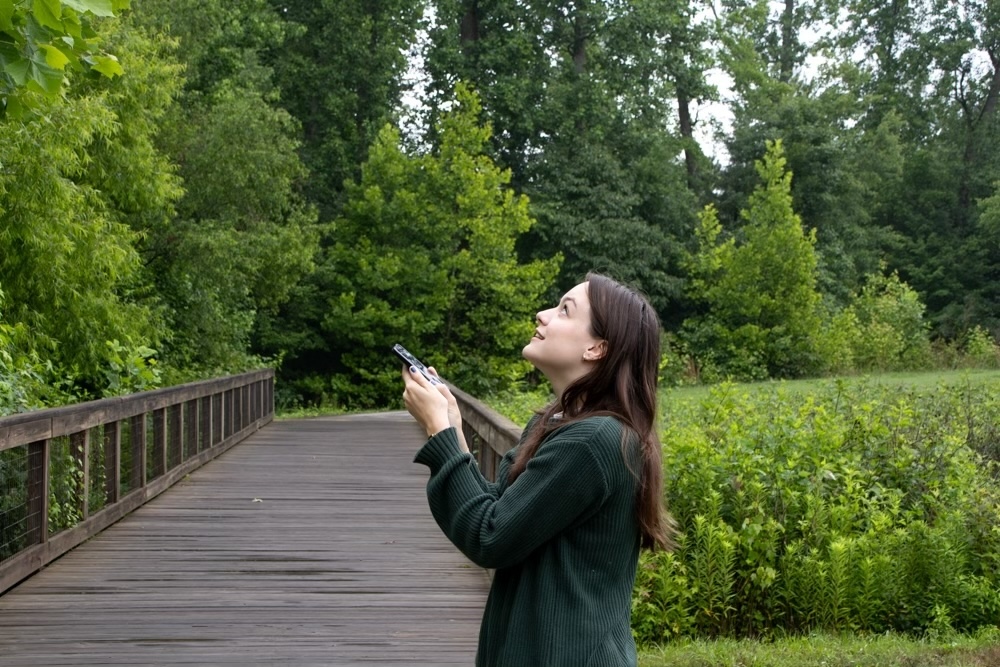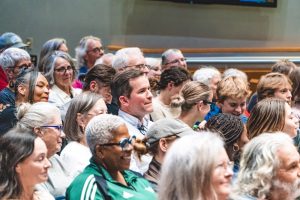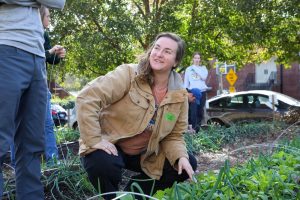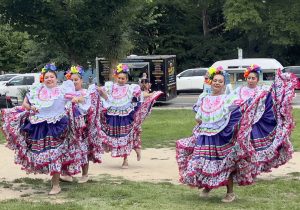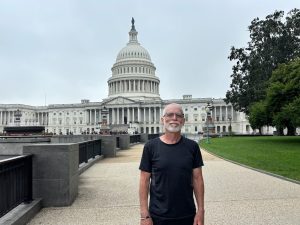On Sundays and Mondays between 6 and 9 a.m., most Durham residents are snoozing their alarms, brewing coffee and skimming their inboxes. Meanwhile, at unmarked locations across the city, 30 dedicated volunteers raise their phones towards roofs and treetops, searching for the warblers behind the morning’s sidewalk serenades.
“I’ve recently gotten into birding in my old age,” jokes Gabrielle Bunnell, a 26-year-old bookstore clerk.
The morning air is thick but mild, its humidity not yet oppressive as she stands peering up at a thicket of sycamores and sweet gum trees lining a walking trail near Brier Creek. A steady whir of chirps and chitters bounces back and forth between the branches. Behind Bunnell, a great blue heron alights on the glassy surface of a small pond, extending its impressive black-tipped wings and spindly yellow legs.
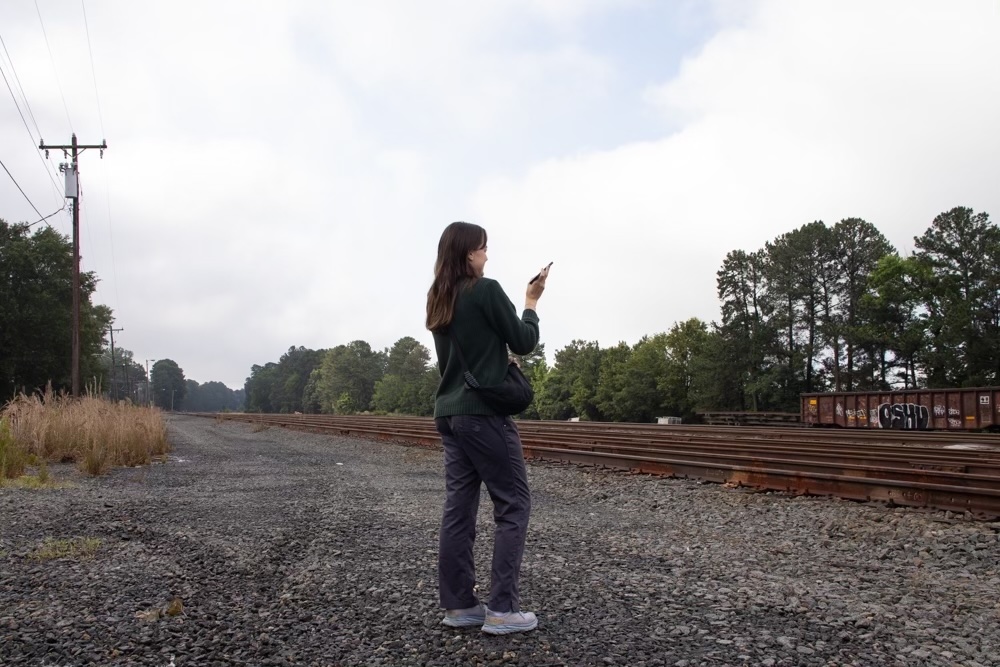
For Bunnell and many other participants in The Concrete Chorus Project, birding is both a hobby and an opportunity to contribute to conservation science. Founded by ecological researcher and former North Carolina resident Bradley Allf, the project investigates what makes birds thrive in cities.
The study examines where different bird species nest in Durham to better understand how social and ecological factors shape biodiversity. In the future, Allf hopes to expand to major American cities.
“This project, I hope, will provide us kind of an ingredient list tailored to different regions all over the United States for best supporting birds in even in quite urban areas,” says Allf.
One of the study’s central questions tests whether the “luxury effect”— the tendency of more affluent urban neighborhoods to host a greater diversity of plant and animal life — holds true in Durham. Allf suspects it will.
“Durham is a pretty good example,” he says of the luxury effect. “A lot of these really nice neighborhoods downtown, like Trinity Park, that have pretty expensive homes also have beautiful old willow oaks that have been there for 80, 90,100 years, and they provide a lot of lovely shade. And in addition, they provide homes for a lot of foraging birds, so you have really lovely birdsong in places like that.”

To collect data, volunteers travel to randomly generated coordinate points throughout Durham and use the Merlin Bird ID app to record and identify birds based on their distinct songs.
“It’s like a game,” Bunnell says, giddily scrolling through the list of species she’s encountered. She pauses on the prothonotary warbler, a round-bodied bird with brilliant yellow plumage and slate blue wings.
“I don’t know how to say that,” she laughs, gesturing at the little guy’s stately title.“But he was literally so adorable.”
Some sampling sites, like the wooded pond near Brier Creek where Bunnell goes to record, share Trinity Park’s tranquil greenspace. Others are marked by less natural hues: the smooth orange of a Dunkin Donuts drive-thru on Hillsborough Road or dull gray of an exit ramp off I-85.
Ryan Campbell, a statistical geneticist who works in Research Triangle Park (RTP), notes the difference between the species he’s spotted in the woods near his office and those at his sampling site in East Durham.
“In East Durham, you mostly hear the common city birds—house sparrows, house finches, mockingbirds—the kinds of species that thrive around people. But in RTP, the app picked up birds like the brown-headed nuthatch, indigo bunting, and wood thrush,” he says.
Allf chose to use real live volunteers instead of autonomous recording devices so he could gather data from more populated locations without leaving equipment unattended. In Allf’s opinion, using people to sample birdsong benefits both his dataset and the volunteers.
Volunteers such as Courtney McGuire say they felt empowered by their contributions to the citizen-led project. McGuire, a public health researcher, recently lost her job due to USAID funding cuts.
“To see the hits on science from our administration is just terrifying, right?…” she says. “And so the idea that community members can push back against that — that this is a really low-cost way to collect data and be able to say something really important about the health of our bird species is really exciting to me.”
Allf also sees Concrete Chorus as a valuable opportunity to connect with nature.
“One [benefit] that comes to mind is this idea of sense of place, which is sort of the connection one feels to their local community and…literal local geographic space,” Allf explains on the phone from his Colorado-based lab.
“That sounds…,” he hesitates, the line falling silent. “I don’t know, it sounds silly at one level, maybe, but I can tell you even just listening to one snippet of a song really takes me back to North Carolina.”
McGuire, who was excited by a recent encounter with an oriole, the namesake of her family’s favorite baseball team, echoes Allf’s sentiment.
“It’s been a really good reminder for me to slow down in the morning, to, like, turn off the news and just listen to some birds,” she says.
Above: Gabrielle Bunnell records birdsong as a volunteer for the Concrete Chorus Project. Photo by Paige Stevens — The 9th Street Journal

